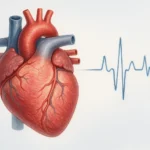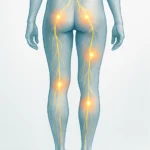
Understanding and Managing Fever at Night: A Comprehensive Guide for Health Professionals
Introduction to Fever at Night
Fever at night is a common symptom observed in various medical conditions, and its occurrence can be indicative of underlying health issues. It is important to recognize that fever spikes during the night are not limited to a single cause but may arise from infections, inflammatory diseases, or even cancers. Understanding the root causes of nighttime fever is crucial for accurate diagnosis and timely intervention.
Common causes of nighttime fever include:
- Infections: Pneumonia, malaria, and tuberculosis are well-known triggers of nighttime fever.
- Inflammatory Conditions: Diseases like rheumatoid arthritis can cause fever as part of the body’s immune response.
- Malignancies: Cancers such as lymphoma may lead to persistent or recurrent fevers, which often worsen at night.
The nocturnal nature of these fevers can be attributed to circadian rhythms, which influence immune system activity and body temperature regulation. These fluctuations may lead to an increase in fever symptoms during nighttime hours.
Common Causes of Fever at Night
Fever at night can result from a variety of underlying conditions, including infections, inflammatory diseases, and cancers. Understanding the common causes and recognizing their clinical manifestations is essential for timely diagnosis and appropriate management. In some cases, fever spikes during the night may be related to circadian immune responses, where the body’s natural rhythms influence immune activity and body temperature regulation.
Infectious Causes
Infections are one of the most common triggers of nighttime fever. Pneumonia, malaria, and tuberculosis are often associated with fevers that worsen at night. These infections can induce significant immune responses that elevate body temperature, especially during periods of rest. Diagnosis typically involves clinical assessment, including patient history, physical examination, and laboratory tests such as blood cultures, sputum tests, and imaging. Treatment is focused on addressing the specific infectious agent, with antibiotics or antimalarial medications depending on the etiology.
Inflammatory Conditions
Inflammatory diseases such as rheumatoid arthritis and systemic lupus erythematosus (SLE) can also cause nocturnal fever. In these conditions, the body’s immune system becomes overactive, attacking its own tissues and leading to inflammation. This immune response can trigger fever, particularly during the night when circadian rhythms influence immune function. Diagnosis often requires a combination of patient history, physical examination, and laboratory tests to identify markers of inflammation, such as C-reactive protein (CRP) or erythrocyte sedimentation rate (ESR). Treatment may include disease-modifying anti-rheumatic drugs (DMARDs) or corticosteroids to control the inflammatory process.
Malignancies and Rare Causes
Fever associated with malignancies, especially lymphomas and leukemia, may also manifest predominantly at night. Cancer-related fevers are often part of the body’s systemic inflammatory response to
The Role of Circadian Rhythms in Nighttime Fever
Fever spikes at night are a common phenomenon in many individuals and can be influenced by the body’s circadian rhythms. These rhythms regulate various physiological processes, including immune responses and body temperature, and can contribute to the timing and intensity of fever. Understanding how these cycles function is crucial in recognizing the mechanisms behind nighttime fever.
Circadian Rhythms and Immune Response
The circadian rhythm governs the body’s internal clock, influencing the release of certain hormones and the activity of the immune system. As part of the body’s natural 24-hour cycle, immune responses can vary throughout the day and night. During nighttime, immune activity tends to peak, increasing the body’s susceptibility to inflammatory responses, which can lead to elevated body temperature.
Body Temperature Regulation
Similarly, the regulation of body temperature follows a natural ebb and flow, with the lowest temperatures typically occurring in the early morning and the highest in the evening. This variation is partly driven by the hypothalamus, the body’s thermostat, which adjusts the set point for body temperature in response to external and internal cues. When the body’s temperature regulation system interacts with ongoing immune processes, fever may become more pronounced at night.
Impact on Nighttime Fever
This phenomenon of nocturnal fever is particularly noticeable in conditions such as infections, autoimmune diseases, and malignancies, where inflammatory responses or immune system activity are heightened. The timing of these responses, regulated by circadian rhythms, can lead to more intense fever spikes during nighttime hours. Understanding this physiological mechanism is important for clinicians when evaluating patients with persistent or recurrent nighttime fever, as it provides insight into the body’s natural cycles and their influence on symptoms.
Approaching the Diagnosis of Fever at Night
Diagnosing the underlying cause of fever at night requires a systematic approach that includes thorough patient history, clinical evaluation, and appropriate laboratory testing. Nighttime fever patterns can provide important diagnostic clues, especially when combined with other symptoms, and should be carefully assessed in order to determine the most likely cause.
Clinical Evaluation
The first step in diagnosing nighttime fever is a detailed clinical evaluation. This includes a thorough patient history, which can help identify potential causes based on recent illnesses, travel history, or exposure to infectious agents. The physical exam plays a critical role in identifying signs of systemic infections, inflammation, or malignancy. Vital signs, particularly temperature patterns, are carefully monitored during the evaluation to determine the nature of the fever-whether it is intermittent, sustained, or spiking during the night.
Laboratory and Imaging Tests
Once the clinical evaluation is complete, laboratory tests and imaging techniques are often used to further investigate the cause of nighttime fever. These tests may include:
- Blood Cultures: Essential for identifying bacterial infections.
- Polymerase Chain Reaction (PCR) Tests: Useful for detecting viral or parasitic infections.
- Complete Blood Count (CBC): Helps assess overall health and detect infections.
- C-Reactive Protein (CRP) and Erythrocyte Sedimentation Rate (ESR): Indicators of inflammation in the body.
- Imaging Studies: Chest X-rays or abdominal ultrasounds may be needed based on the suspected source of infection or inflammation.
Red Flags for Serious Conditions
During the diagnostic process, it is important to be aware of red flags that suggest a serious underlying condition. These may include:
- Persistent high fever
- Unexplained weight loss
- Night sweats
- Signs of sepsis: Hypotension, confusion, or organ dysfunction.
The presence of these red flags requires urgent investigation and may warrant more aggressive diagnostic and therapeutic measures.
Management and Treatment of Fever at Night
The management of fever at night primarily focuses on addressing the underlying cause of the fever while providing symptom relief. Effective treatment depends on the nature of the condition causing the fever, whether it is an infection, inflammatory disorder, or malignancy. Additionally, managing the symptoms through supportive care and medications is essential to improve patient comfort while the underlying issue is being resolved.
Symptomatic Management
Symptomatic management plays a key role in reducing fever and improving patient comfort. The primary intervention for reducing fever is the use of antipyretic medications, such as acetaminophen or ibuprofen. These drugs work by lowering the set point of the hypothalamus, the body’s thermostat, which helps to reduce elevated body temperature. While antipyretics can provide temporary relief, they do not treat the underlying cause of the fever, so they should be used alongside diagnostic efforts to identify and manage the root cause.
In addition to antipyretics, supportive care measures such as fluid intake, cooling methods, and rest are essential. Hydration is important to prevent dehydration, which can be exacerbated by fever. In some cases, a lukewarm bath or the use of cooling blankets may help manage fever spikes, especially if the fever is severe or causing discomfort.
Targeted Treatment for Specific Causes
Once the underlying cause of fever at night is identified, targeted treatment should be initiated. For infections, antibiotics or antivirals are necessary to address bacterial or viral pathogens, respectively. For example, pneumonia may require antibiotics, while malaria requires antimalarial medications. In some cases, antifungal treatments may be needed if a fungal infection is identified as the cause of fever.
For inflammatory conditions, such as rheumatoid arthritis or systemic lupus erythematosus, the use of corticosteroids or disease-modifying antirheumatic drugs (DMARDs) may help control the inflammatory response and reduce fever. In cases of malignancies like lymphoma or leukemia, chemotherapy or immunotherapy may be required to treat the underlying cancer. Early identification and prompt treatment of the specific cause of fever can help prevent complications and improve patient outcomes.
Prognosis and Follow-Up for Nighttime Fever
The prognosis for patients experiencing fever at night largely depends on the underlying cause. Early identification and appropriate treatment can significantly improve outcomes. For example, if the fever is due to an infectious agent, timely administration of antibiotics or antivirals can often lead to full recovery. Similarly, for inflammatory or autoimmune conditions, effective management with disease-modifying drugs can help control the fever and prevent complications.
Follow-Up Care
It is crucial to monitor patients with persistent or recurrent nighttime fever closely. Follow-up care plays a key role in tracking the resolution of the underlying condition and preventing complications. Regular assessments help determine if further investigations or adjustments to treatment are necessary. For patients with serious conditions, such as malignancies, long-term follow-up is necessary to assess response to treatment and detect signs of disease progression.
- Infectious Causes: Timely antibiotics or antivirals can lead to full recovery.
- Inflammatory Conditions: Disease-modifying drugs can help control fever and prevent complications.
- Malignancies: Long-term follow-up is essential to monitor treatment response and disease progression.
- Fever at night can be caused by infections such as pneumonia, malaria, or tuberculosis, as well as inflammatory diseases and cancers.
- Nighttime fever may result from circadian immune responses or natural body temperature fluctuations.
- Diagnosing fever at night involves reviewing patient history, performing a physical exam, and conducting relevant laboratory tests.
- Nighttime fever patterns provide diagnostic clues when combined with other clinical symptoms.
- Treatment focuses on addressing the underlying cause, such as using antibiotics for infections or chemotherapy for cancers.
- Symptom management often includes antipyretics to reduce fever until the root cause is identified and treated.
- Prognosis depends on the underlying cause, with early diagnosis and treatment improving patient outcomes, particularly for serious conditions.
- Why does fever worsen at night? Nighttime fever is often linked to circadian rhythms, where the body’s immune system and temperature regulation are naturally more active during the night, causing fever spikes.
- What are common causes of nighttime fever? Common causes include infections like pneumonia or malaria, inflammatory conditions such as rheumatoid arthritis, and cancers like lymphoma, all of which can elevate body temperature, particularly at night.
- How is fever at night diagnosed? Diagnosing nighttime fever involves a detailed patient history, physical examination, and various tests, including blood cultures and imaging, to pinpoint the cause.
- What treatments are available for fever at night? Treatment varies by cause, including antibiotics for infections, antimalarial drugs for malaria, or chemotherapy for malignancies. Symptom management often includes antipyretics to reduce fever.
- When should I seek medical attention for nighttime fever? Seek medical attention if the fever persists, is unusually high, or is accompanied by severe symptoms like weight loss, night sweats, or signs of sepsis.



















